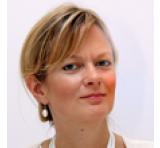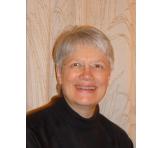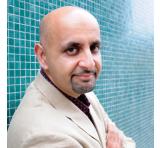What are the main Trends in Religion and Values in Britain?
- Academics
- Grace Davie Exeter University
- Linda Woodhead Lancaster University
- Public Figures
- Aaqil Ahmed Commissioning Editor, Religion and Ethics, BBC
- Cole Moreton Journalist, Sunday Telegraph
Questions for debate
How has religion in Britain changed since 1945? What are the main differences between the 1950s, the 1980s and the 2010s, and what are the continuities? How does all this relate to wider social trends?
Conclusions from the debate
There are significant continuities, including the fact that a half to two-thirds of the population still identify as Christian, and the churches continue to play an important role in society. However, the overall profile of religion in the UK – and of Christianity and the churches – has become far more diverse. Most importantly, the form of religion and the way in which people are religious has changed: there is much more individual choice and selection, less traditional ‘belonging’, and religion supports a much wider range of identities.
Research Findings
The myth of secular progress received a series of shocks from 1979 (Iranian revolution) through 1989 (fall of communism) to 2001 (twin towers attack) which revealed the limitations and blind spots of a perspective which held that religion would inevitably decline and that the rest of the world would follow where secular Europe had led.
The religious profile of the UK has changed significantly, and change has been most evident since the 1980s:
- the historic churches have suffered severe decline (attendance has more than halved since the 1980s)
- the overall profile of the Christian churches has changed: there are now more Baptist and independent church goers than there are Anglicans or Roman Catholics
- non-Christian faiths have grown in numbers and profile, with Islam being the largest. These are not merely ‘imports’, but take distinctive forms in the British context
- alternative spirituality has grown dramatically since the 1980s, and its wide influence is most evident in the world of holistic or alternative healthcare (‘mind, body and spirit’)
- numbers identifying as ‘non-religious’ have grown, though not all of these are secular (some also identify as ‘spiritual’). Atheists remain small in numbers, but are increasingly vocal in the media and public debate.
Overall, the religious and secular profile of the UK has become increasingly diverse since 1945. It is not merely that there are more ‘religions’, but there is much greater diversity of religious identity, even in relation to the same religion.
Modes of belief, belonging, identity and ritual have all shifted since the 1970s – from church- and clergy-controlled forms of centralised, organised, hierarchical institution to more laicised, democratic, fluid, and self-chosen forms with much looser networks of association, often across national borders.
As well as shrinking in public influence (which nevertheless remains considerable), the churches have become more socially conservative since the 1970s, and it can be argued that they now represent a minority rather than a (liberal) majority viewpoint. This is reflected in disputes over issues like female leadership and gay marriage.
Christianity has lost it dominance, though not its influence, and the state has become increasingly interested in relating to all faiths. The status of the Church of England has been downgraded in the process.
Religion is increasingly affected by the logic of the ‘market’ and not just the state – for example in having to market and brand itself and, in some cases, take payment for services. This provides new opportunities for a much wider range of religious ‘producers’ and ‘products’, as do new media like the internet.
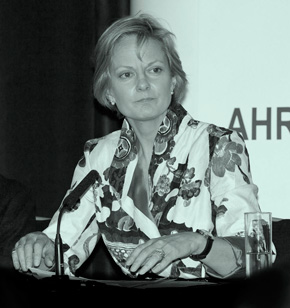
"41% of us now believe in angels, 53% in an afterlife and 70% in a soul – that’s much higher, often double, than when the records began."
Points of Debate and Disagreement
| Though their numbers have declined, the historic churches (especially the state churches in the UK) retain their social significance. |  |
Their significance has diminished, and they no longer speak for the majority. |
| Religious continuity remains more important than change. |  |
The 1980s represent a dramatic hinge in religious history – the point at which the organised model of religion consolidated at the Reformation ceased to be the main mode of religion in the UK. |
| These changes involve a loss of community and salience in people’s lives. |  |
These changes involve a recasting of community into looser networks of belonging and occasional gathering; the fact that religion is chosen makes it no less salient. |
Practical Suggestions
If religion is no longer ‘packaged’ in the churches or a small number of ‘world religions’, but is more diverse and individualised, more thought needs to be given to updating how religion is treated in research, law and policy, for example:
- the census question on religion
- the ways in which local and national government relate to religion, religious ‘leaders’ and ‘religious communities’
- how religion, religious symbols, and religious identity are defined in legal cases concerning, for example, freedom of religious expression and freedom to display religious symbols.
The status and authority of traditional religious ‘leaders’ should not be assumed to be what it once was, and their ability to speak in a representative capacity may be limited.
Inter-faith relations become a much more complex matter in relation to ‘superdiversity’ (see Debate 1) and may need to be radically rethought.
The role and status of the Church of England (and the Church of Scotland) needs to be clarified: can it still claim to be a truly national and inclusive body which speaks on behalf of all ‘souls’ and all religions in the UK?
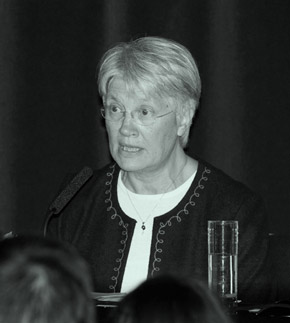
"Religion – and here I speak mainly about Christianity – has moved in the post-war period from something approximating a conscript army, with large numbers of people involved whether they liked it or not, to a professional army which people join voluntarily, sometimes for a short period and sometimes for a longer one. Broadly speaking I contend that the professionals are rather more committed than conscripts. Does that make us a more or less secular society that we were in the 1950s?"
"Everyday, lived religion – is thriving and evolving, whilst hierarchical, institutionalised, dogmatic forms of religion are marginalised."
How the Media Reported the Debate
"Whether secularisation theory holds true or not, one thing is crystal clear. The established hierarchical, dogmatic Church is in terminal decline. This is why its demands for yet more power and privilege must be challenged."
"Religion has returned to the core business of sustaining everyday life, supporting relations with the living and the dead, and managing misfortune."
"Why is all this happening now? It’s common to date the current, fevered debate on the place of faith in modern Britain to the fallout from 9/11 or, beyond that, to the Rushdie affair of the late 1980s. But both those traumatic events are beginning to recede into history."
